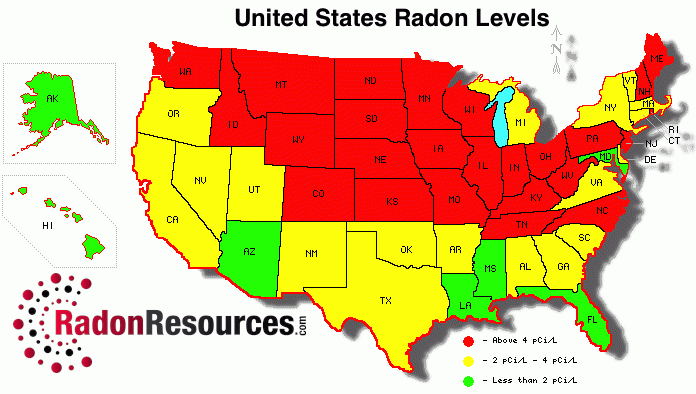US EPA
Is radon really bad for you?
Breathing radon over time increases your risk of lung cancer. Radon is the second leading cause of lung cancer in the United States. Nationally, the EPA estimates that about 21,000 people die each year from radon-related lung cancer. Only smoking causes more lung cancer deaths.

Indoor radon can be reduced by sealing basement structures, water drainage, or by sub-slab, or sub-membrane depressurization. In most cases, mitigators can make use of PVC piping and specialized radon suction fans to tire sub-slab, or sub-membrane radon as well as various Find out more pinterest.com/pin/598486237974593617 other soil gases to the outside environment. The majority of these options for radon reduction need maintenance, and it is essential to continually change any followers or filters as needed to continue proper functioning. A radon degree of 4.0 pCi/L is still a health risk, which is why it's important to have professional radon mitigation. Expert mitigation can usually decrease radon levels to 0.4 pCi/L.
The EPA sets the level of harmful radon gas exposure at or above 4 pCi/L. If your home has actually radon gas degrees surpassing this action level, it's recommended that you go through reduction initiatives to decrease exposure. If screening reveals a much greater degree, you'll most definitely need reduction and might require a lot more comprehensive restorations to seal the resource of the gas.
Is radon mitigation really necessary?
When radon gas enters the body, it exposes the lungs to small amounts of radiation. In small quantities, experts say this is harmless. However, in persistent exposures or larger quantities, radon can damage the cells of the lining of the lungs, increasing a person's chance of developing lung cancer.
It can also be launched from constructing materials or via water originating from radon-contaminated wells, according to the National Institutes of Wellness (NIH). Radon levels can be better in houses and also buildings that are well-insulated, firmly sealed or improved soil rich in the contaminated aspects uranium, radium and thorium.
- Your threat of lung cancer boosts considerably with exposure to higher radon degrees.
- Radon gas is a naturally-occurring by-product of the contaminated decay of Uranium in the soil.
- Depending upon your geographic area, the radon levels of the air you take a breath beyond your residence might be as high as 0.75 pCi/L.
- The United States EPA has put it clearly, specifying, "Any radon exposure has some threat of creating lung cancer cells.
How do you eliminate radon?

Possible symptoms include shortness of breath (difficulty breathing), a new or worsening cough, pain or tightness in the chest, hoarseness, or trouble swallowing. If you smoke and you know you've been exposed to high levels of radon, it's very important to quit smoking.
If they are subjected to radon, individuals who smoke or utilized to smoke have an even greater possibility of establishing lung cancer cells. You might just consider what you're exposed to outdoors when you believe regarding pollution. Yet indoor air high quality in your home issues, also, and it can be majorly impacted by the presence of a contaminated gas called radon. This gas can develop to hazardous levels and also increase your risk for developing lung cancer cells-- also if you do not smoke, according to the American Lung Organization.
What to Find out about the Dangers of Radon Gas in Your Home
What are the symptoms of radon in your home?
If a person has been exposed to radon, 75 percent of the radon progeny in lungs will become "harmless" lead particles after 44 years. When an alpha particle damages a cell to make it cancerous, the onset of lung cancer takes a minimum of 5 years but most often 15 to 25 years, and even longer.
Nevertheless, when radon gets trapped inside your home-- after getting in a home via joints in wall surfaces, cellar floorings, structures as well as various other openings-- it may concentrate at harmful degrees. As a matter of fact, radon is the 2nd leading root cause of lung cancer, responsible for an estimated 21,000 deaths every year in the United States, adding to lung cancer cells's status as the # 1 cancer killer. When breathed in into the lungs, it can harm DNA as well as trigger lung cancer. The EPA's advised degree for radon reduction is 4.0 pCi/L or over. It is nevertheless an honorable gas with no chemical fondness yet is easily affected by air movements and stress.
How long does it take for radon to cause cancer?
Fact: You will reduce your risk of lung cancer when you reduce radon levels, even if you've lived with an elevated radon level for a long time. Keep in mind that radon levels below 4 pCi/L still pose some risk and that radon levels can be reduced to 2 pCi/L or below in most homes.